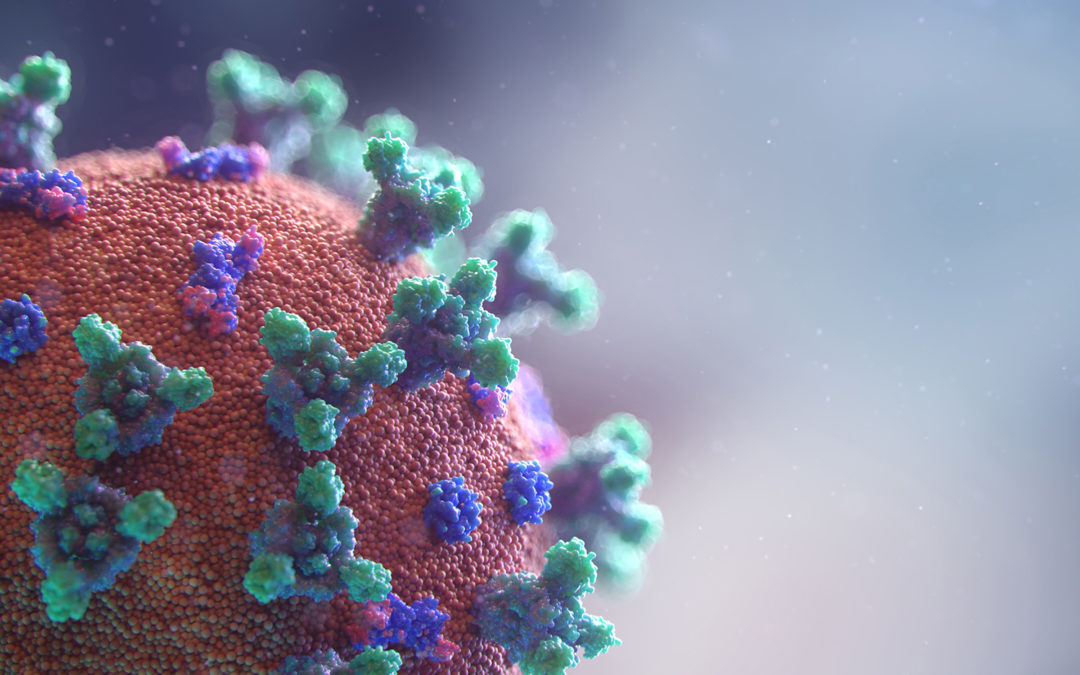Never underestimate the power of the small. In a matter of weeks, the microscopic virus COVID-19 has reshaped our macroworld in ways we never imagined possible. It is understandable that many feel fear, anxiety, and distress right now.
Active participation in an effort to help others is one way to temporarily alleviate some of those emotions. Biomimics have a valuable role to play in this moment. As biomimics, we are trained to find solutions to the world’s complex and often-painful challenges by turning to nature’s designs for guidance and wisdom.
First, we must scope the challenge we face. What do we know about the context of COVID-19?
- There is currently no cure, vaccine, nor medical treatment.
- It is a novel virus, meaning that it’s new to the human species; this explains why we do not yet have a medical solution to it.
- The research on this virus is being conducted urgently and collaboratively all over the world by our colleagues with expertise in infectious disease and public health.
- From past experience with treating other novel viruses, a cure, vaccine, and treatment could be as much as 12-18 months away. Why is the time horizon so long? The medical solutions must be created, administered, tested, analyzed, approved, scaled, and then distributed. Scientists are working at a feverish pace to do this work, and we must understand that this process, to some extent, takes time. Therefore, in the short-term, we must fill the gap between now and the time when we have a medical solution.
- We do know it spreads by person-to-person contact. This is why social distancing is so important right now to limit and contain the spread as much as we can for as long as we can.
- Though we are not certain how long the virus survives on different surfaces, we know it survives for some amount of time and that the amount of time it survives can vary by different surface types (metal, plastic, cardboard, etc.).
- Soap and hot water, as well as hand sanitizer with 60-percent alcohol content, breaks down the virus.
- Healthcare workers are the absolute heroes of our time. They are our frontline of defense in this pandemic. We must urgently do everything we can to protect their health, because they are coming into contact with the virus continuously throughout their work as they care for sick patients.
For it being a novel virus, all of this context is a tremendous help to us from a biomimicry perspective. When we synthesize all of this information, we can build out the frame in which our solution must work and identify which types of solutions we need to help find. It’s in this spirit that we present a call to action to the entire biomimicry community to develop innovation in materials science and product development in the following fields:
Medical innovations
Nature has many possible solutions to future pandemics and existing viruses. Species such as a wide variety of bats seem to be able to carry these diseases and not succumb to them. Studying these species and distilling the deep design principles of their abilities to be carriers could hold powerful keys to human health. Wiping them out through climate change, habitat loss, and hunting could literally translate into wiping out their potential to help us find preventions, cures, and treatments. Species conservation is vital to human health. Let’s honor what other species have to teach us. Let’s protect them and learn from them.
Medical technology
One of the greatest shortages right now in the healthcare field involves PPE—personal protective equipment. Medical masks, gowns, face shields, and shoes are vital to protect our healthcare workers while they are saving the lives of and caring for people who are so sick from COVID-19 that they need to be hospitalized or placed in the ICU.
It might seem simple to just ask PPE manufacturers to increase their output. The challenge is that these manufacturers are facing shortages of the raw material to create PPE, which are mostly made from specialized types of plastic woven in specific ways by specialized machines. We need better materials (and more of them) to create these lifesaving products, and we need faster, easier, cheaper, and more efficient ways to manufacture them.
There has never been a more urgent time to develop biodegradable materials that can replace the various types of plastic with a more sustainable material.
Food packaging
The discussion about plastic also leads directly into our food packaging issue. Much of our food is packaged in plastic for sanitary reasons, and sanitation has become a hot button issue in the past months due to COVID-19. Plastic packaging, like medical waste, is a main contributor to the plastic waste issue we have. By developing a biodegradable alternative to plastic, we may be able to feed two birds with one seed—create an alternative and sanitary packaging material for food and an alternative material for PPE.
Surface coverings
In addition to washing our hands, we’re also cautioned to avoid touching surfaces whenever possible, because the COVID-19 virus lives on surfaces for some amount of time. If someone with COVID-19 touches a surface and then at some later time someone else touches that same surface, they risk getting the disease. One solution that would be immensely valuable would be some type of covering (a film, paint, casing, etc.) that would resist the attachment of viruses to it, or better yet degrade them on contact the way that soap and alcohol do. This type of material would also be used in PPE to resist the attachment of the virus to keep it clean and sterile.
Cleaning and personal care products
Sustainable cleaning and personal care products could also be a solution to the PPE shortage and the need for the sterilization of physical and personal surfaces. Healthcare workers could safely re-use PPE if it could be properly cleaned and sterilized. Likewise, if there was some type of personal care product (a lotion, gel, etc.) that we could put on our hands that would degrade the virus on contact, that would also be a tremendous help.
Short-term solutions with long-term benefits
While so much of our collective attention is now focused on COVID-19, our efforts have far-reaching benefits that will last long after this current pandemic ends. And it’s not a matter of if we’ll see another pandemic in our lifetimes, but when. COVID-19 will not be the last time we face a viral pandemic. With climate change, we are likely to see more pandemics in the future than we’ve seen in the past. Innovations in all of the areas detailed above are not only helpful for managing COVID-19. They would help us better manage any crisis like this in the future.
Our healthcare systems are at the breaking point now, because we have not been properly preparing for an event like this despite the warnings from epidemiologists and public health professionals. They warned us. We ignored them. Let’s not do that again.
Let’s innovate now to help our current situation, and help our future selves better identify and manage a pandemic when it finds us again. There has never been a better time to turn to nature for help, counsel, and wisdom. Biomimics, our time is now. The world needs us; it is crying out for help and innovation. Let’s answer that call.
 Christa Avampato is a writer and the founder of Double or Nothing Media in New York City. She is currently a graduate student in the Biomimicry Program at ASU.
Christa Avampato is a writer and the founder of Double or Nothing Media in New York City. She is currently a graduate student in the Biomimicry Program at ASU.
Twitter: @christanyc | Instagram: @christarosenyc

